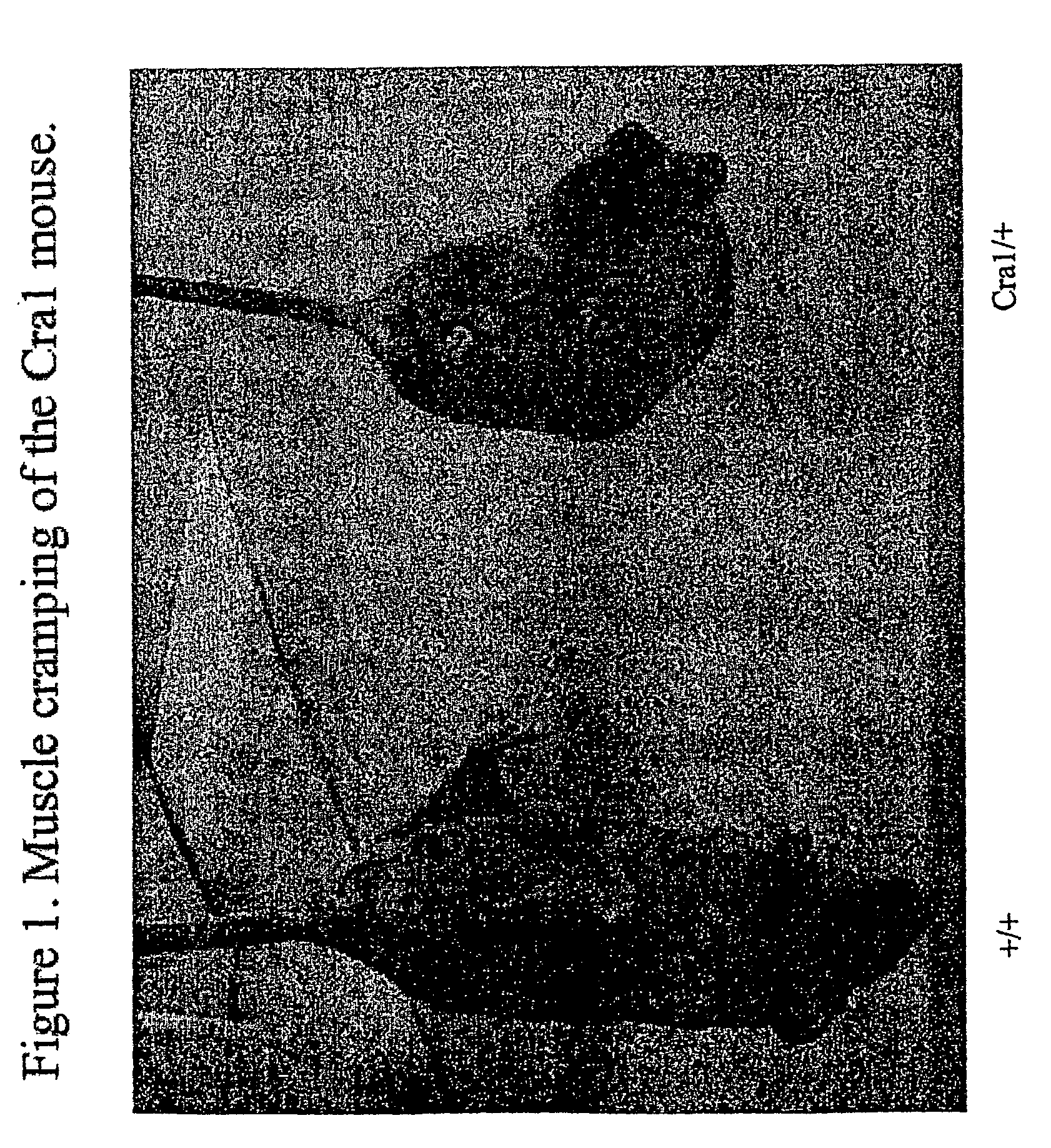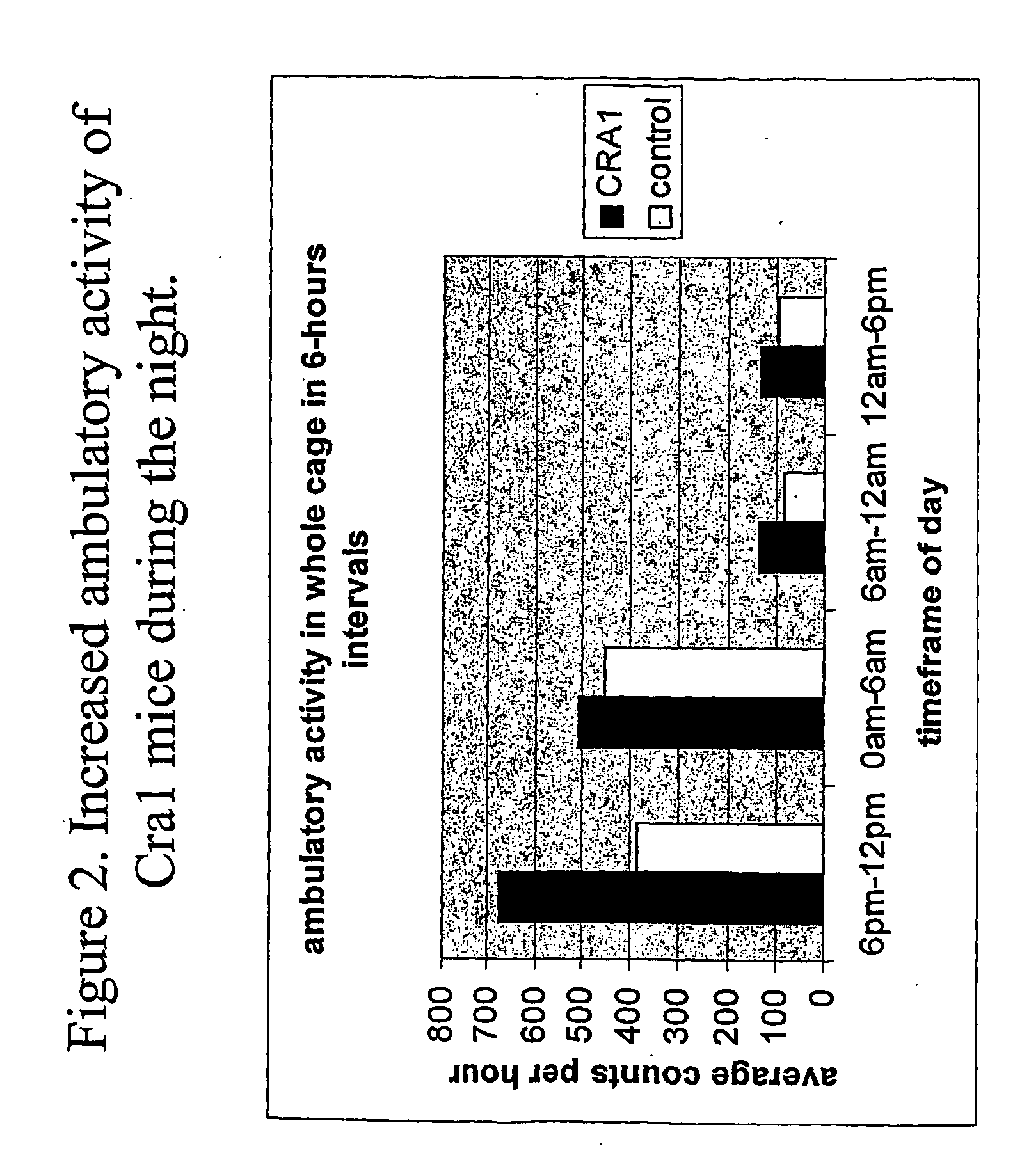Cytoplasmic dynein heavy chain 1 genes, expression products, non-human animal model uses in human neurological diseases
a technology of cytoplasmic dynein and heavy chain, which is applied in the field of nonhuman animals, can solve the problems of affecting the function of involved muscles, affecting the production of detrimental calcium, and degenerative diseases of motor neurons that are severely debilitating and largely fatal in humans as well as other mammalian species
- Summary
- Abstract
- Description
- Claims
- Application Information
AI Technical Summary
Benefits of technology
Problems solved by technology
Method used
Image
Examples
example 1
Production of Animals of the Invention and Breeding Strategies
[0797] To produce mouse mutants, a C3HeB / FeJ male mouse (The Jackson Laboratory, Bar Harbor Me., USA) was injected intraperitoneally three times in weekly intervals between 8-10 weeks of age with ethyl-nitroso-urea (ENU) (Serva Electrophoresis GmbH, Heidelberg, Germany) at 90 mg / kg body weight.
Generation of F1 Progeny:
[0798] 50 days after the last injection the injected male mouse was mated to wild type C3HeB / FeJ female partners. The F1 progeny (up to 100 offspring) were then analyzed for phenotypes of dominant traits.
Generation of F2 Progeny-Genetic Confirmation of Dominant Phenotype:
[0799] Affected F1 individuals were mated to wild type C3HeB / FeJ mice and the resulting F2 progeny was screened for the identical pathological phenotype as identified in F1 generation.
Generation of F3 Progeny:
[0800] For maintenance purposes affected F2 individuals were mated to wild type C3HeB / FeJ mice. Affected F2 individuals were...
example 2
First Identification of Phenotype
[0801] The Cra1 mouse mutant was identified by the observation of hind limb cramping during manual tail suspension in the heterozygous condition (FIG. 1). Adult mice were manually suspended by their tails for one minute. During this period it was observed whether the mice display cramping of their hind limbs. In all tests, the observation of hind limb cramping was invariably correlated to the heterozygous Cra1 / + genotype.
[0802] A broad range of standard physiological values were tested, but were within wild type (control) ranges.
example 3
Analysis of Muscle Endurance and Motor Coordination
[0803] A semi-quantitative evaluation of the phenotype was accomplished by the application of the hanging wire assay (for results see FIG. 3), as a tool for measuring muscle endurance. Muscle endurance of adult heterozygous Cra1 individuals (Cra1 / +) was measured in comparison to wildtype individuals by placing individual mice on a wire grid, mildly shaking the grid to cause the mouse to grip the wires with their paws, and then inverting the grid. The grid was held stationary in the inverted position and the time elapsed until the mouse fell was recorded as the latency to fall. Both sexes of Cra1 mice exhibit a significantly reduced latency to fall off the grid in comparison to wild type mice.
[0804] A reduction in motor coordination was subsequently suggested by a reduced performance in the coat hanger and stationary beam assays. In a coat hanger assay a single heterozygous Cra1 animal was placed in the middle of the horizontal par...
PUM
| Property | Measurement | Unit |
|---|---|---|
| Fraction | aaaaa | aaaaa |
| Fraction | aaaaa | aaaaa |
| Fraction | aaaaa | aaaaa |
Abstract
Description
Claims
Application Information
 Login to View More
Login to View More - R&D
- Intellectual Property
- Life Sciences
- Materials
- Tech Scout
- Unparalleled Data Quality
- Higher Quality Content
- 60% Fewer Hallucinations
Browse by: Latest US Patents, China's latest patents, Technical Efficacy Thesaurus, Application Domain, Technology Topic, Popular Technical Reports.
© 2025 PatSnap. All rights reserved.Legal|Privacy policy|Modern Slavery Act Transparency Statement|Sitemap|About US| Contact US: help@patsnap.com



